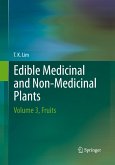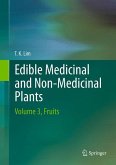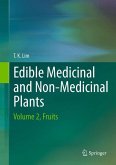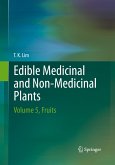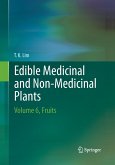This book continues as volume 2 of a multi-compendium on Edible Medicinal and Non-Medicinal Plants. It covers edible fruits/seeds used fresh or processed, as vegetables, spices, stimulants, pulses, edible oils and beverages. It encompasses species from the following families: Clusiaceae, Combretaceae, Cucurbitaceae, Dilleniaceae, Ebenaceae, Euphorbiaceae, Ericaceae and Fabaceae. This work will be of significant interest to scientists, researchers, medical practitioners, pharmacologists, ethnobotanists, horticulturists, food nutritionists, agriculturists, botanists, herbalogists, conservationists, teachers, lecturers, students and the general public. Topics covered include: taxonomy (botanical name and synonyms); common English and vernacular names; origin and distribution; agro-ecological requirements; edible plant part and uses; botany; nutritive and medicinal/pharmacological properties, medicinal uses and current research findings; non-edible uses; and selected/cited references.
Hinweis: Dieser Artikel kann nur an eine deutsche Lieferadresse ausgeliefert werden.
Hinweis: Dieser Artikel kann nur an eine deutsche Lieferadresse ausgeliefert werden.
From the reviews:
"This remarkable book devotes over 800 pages to plant families whose names begin with the first three letters of the Latin alphabet starting with Actinidaceae (kiwi fruit) and ending with Cycadaceae (cycads). ... The author summarizes antioxidant, anticancer, and antimicrobial activities of the plants, along with reports of antivenin, radioprotective, and antiaging properties, some of which are cited in preliminary studies only. Summing Up: Recommended. Upper-division undergraduates and above; informed general readers." (S. Hammer, Choice, Vol. 49 (11), July, 2012)
"This remarkable book devotes over 800 pages to plant families whose names begin with the first three letters of the Latin alphabet starting with Actinidaceae (kiwi fruit) and ending with Cycadaceae (cycads). ... The author summarizes antioxidant, anticancer, and antimicrobial activities of the plants, along with reports of antivenin, radioprotective, and antiaging properties, some of which are cited in preliminary studies only. Summing Up: Recommended. Upper-division undergraduates and above; informed general readers." (S. Hammer, Choice, Vol. 49 (11), July, 2012)



